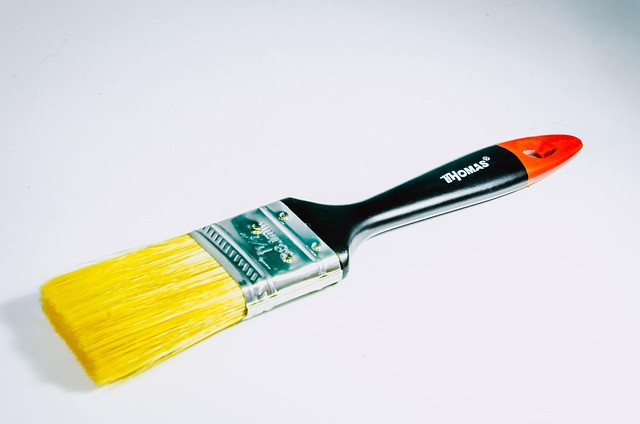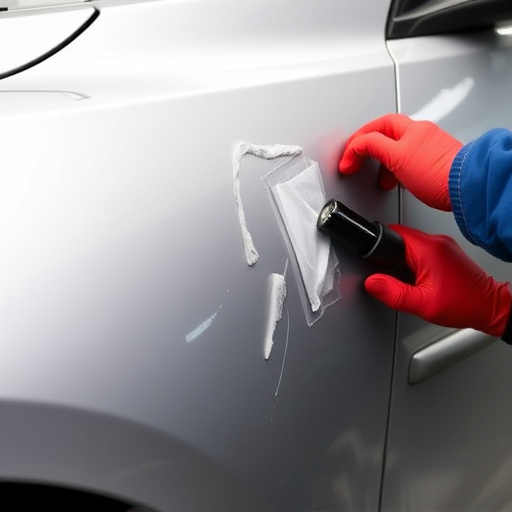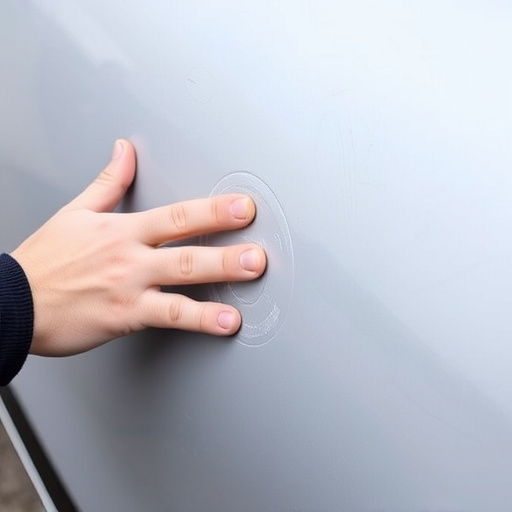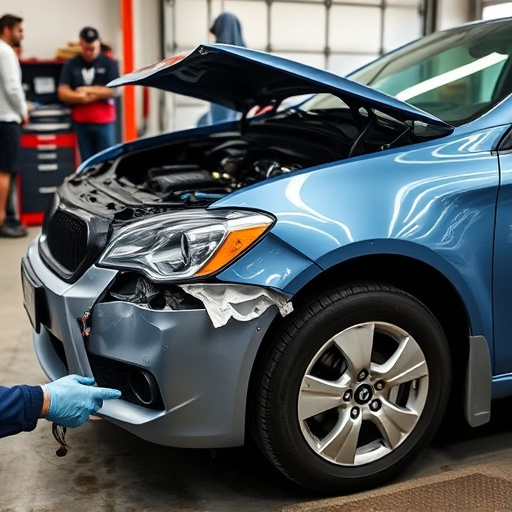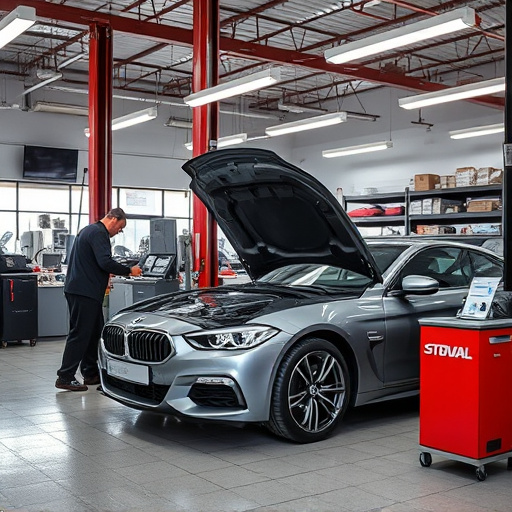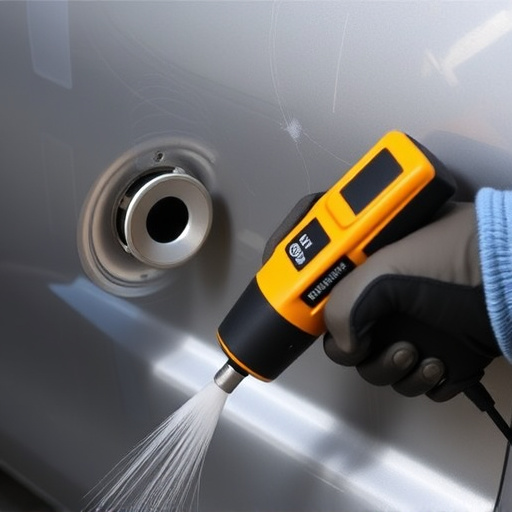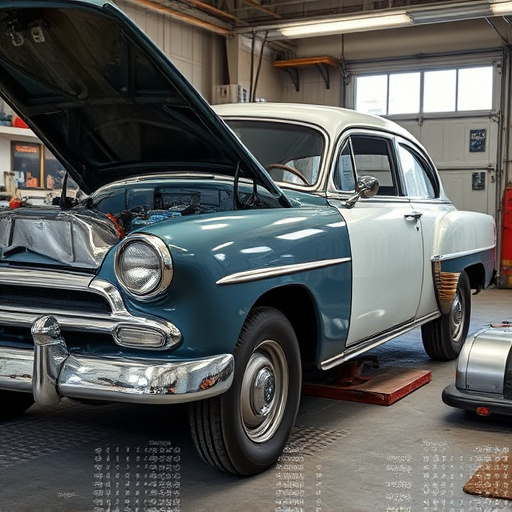A Tesla heat pump inspection ensures optimal cabin temperature control and fuel efficiency. It involves visually checking for damage, monitoring temperature changes, comparing energy consumption to outcomes, and calibrating the cabin temperature sensor using specialized tools under simulated conditions. Auto glass repair and frame straightening indirectly aid by minimizing structural interference, ensuring accurate sensor readings for precise climate control.
In today’s digital era, understanding Tesla’s advanced heating solutions like the heat pump is crucial for optimal vehicle performance and efficiency. This article guides you through a comprehensive Tesla heat pump inspection process, ensuring your vehicle maintains comfortable cabin temperatures. We’ll delve into the step-by-step inspection procedure and validate the accuracy of the cabin temperature sensor, essential components for navigating harsh climates. Discover how to ensure your Tesla’s heating system performs at its best with these insightful tips.
- Understanding Tesla Heat Pump Functionality
- Inspection Process: Step-by-Step Guide
- Validating Cabin Temperature Sensor Accuracy
Understanding Tesla Heat Pump Functionality

The Tesla Heat Pump, a revolutionary system designed to regulate cabin temperature efficiently, operates by transferring heat from the exterior environment into the vehicle’s interior. This process is achieved through a series of compression and expansion cycles utilizing a refrigerant. During cold weather, the heat pump extracts heat from the relatively warmer outside air or ground and compresses it to raise its temperature. This heated refrigerant then circulates throughout the cabin, providing comfort and warmth. Conversely, in warmer conditions, the system reverses this process, removing interior heat and dumping it outside.
Regular Tesla Heat Pump inspections are crucial for maintaining optimal performance and ensuring energy efficiency. These inspections involve checking critical components such as refrigerant levels, evaporator coils, and the cabin temperature sensor. The latter plays a pivotal role in monitoring and regulating internal temperatures, making its validation an essential part of any thorough inspection. Similar to how minor car dent repairs or scratch repairs can enhance a vehicle’s aesthetics, regular heat pump maintenance ensures that this innovative system functions at peak capacity, contributing to both passenger comfort and fuel efficiency.
Inspection Process: Step-by-Step Guide

Conducting a Tesla heat pump inspection involves a meticulous process to ensure optimal performance and comfort within your vehicle. Here’s a step-by-step guide:
1. Preparation: Begin by parking the vehicle in a shaded area to avoid rapid temperature changes during testing. Ensure all doors, trunks, and hoods are closed tightly to maintain an airtight environment, which is crucial for accurate results.
2. Heat Pump Activation: Start the car and engage the heat pump system while ensuring the cabin temperature sensor is operational. This step involves using the climate control settings to simulate various driving conditions. Gradually adjust the temperature controls to witness the heat pump’s efficiency in maintaining or adjusting the cabin temperature.
3. Visual Inspection: Examine the exterior of the vehicle for any signs of a fender bender or car damage repair that might have compromised the heat pump’s integrity. Check for leaks around seals, hoses, and connections. Also, inspect the evaporator coils for debris accumulation, as this can affect cooling performance.
4. Temperature Monitoring: Utilise advanced sensors to validate cabin temperature changes over time. Observe whether the system effectively heats or cools the interior based on external conditions. This step is vital for ensuring the heat pump operates seamlessly across different weather scenarios.
5. Performance Evaluation: Analyze the heat pump’s capacity by comparing energy consumption with actual heating/cooling outcomes. A well-functioning heat pump should deliver efficient temperature regulation, minimizing energy wastage and enhancing overall vehicle comfort.
Validating Cabin Temperature Sensor Accuracy

In a Tesla heat pump inspection, validating the accuracy of the cabin temperature sensor is crucial for ensuring optimal climate control and passenger comfort. This involves meticulously checking the sensor’s readings against environmental conditions, as well as comparing them to the expected performance under various scenarios. During this process, it’s essential to consider factors such as temperature fluctuations, humidity levels, and even external stimuli that could affect sensor precision.
For accurate validation, collision repair services professionals must employ specialized tools to calibrate and test the sensor. This includes simulating real-world conditions in a controlled environment to ensure the sensor responds accurately. Moreover, auto glass repair and frame straightening services can indirectly contribute to sensor accuracy by ensuring the vehicle’s structure and windows are in pristine condition, minimizing any potential interference that could affect temperature readings.
In conclusion, performing a thorough Tesla heat pump inspection and validating the cabin temperature sensor accuracy are essential steps in ensuring optimal vehicle performance. By following the step-by-step guide outlined in this article, car owners can confidently assess their Tesla’s heating system, maintain energy efficiency, and enjoy a comfortable cabin temperature throughout all seasons. Regular inspections are a key component of proactive vehicle maintenance for any electric vehicle owner.

